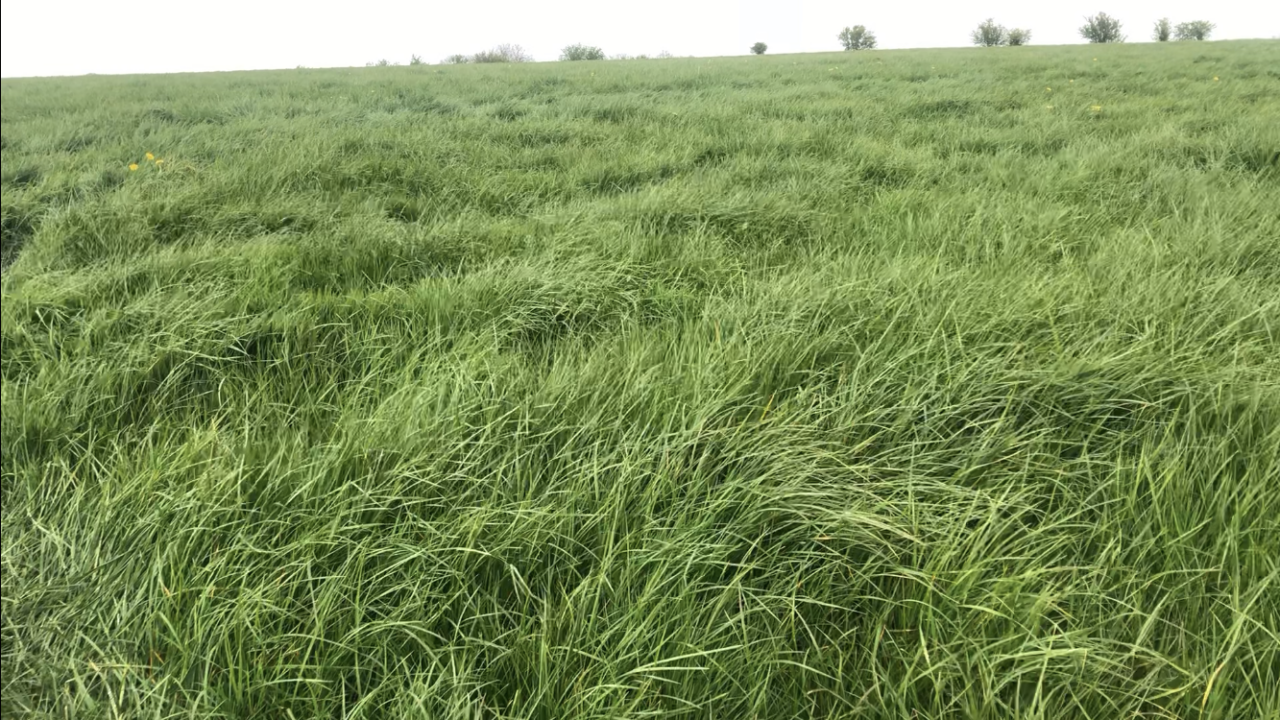Growth Watch By Teagasc’s Seán Cummins and James Fitzgerald
Lower than average grass growth rates from early April through to now, has put pressure on some of the programme farms to hold average farm cover and keep grass in front of stock.
Seven out of the 12 Teagasc Green Acres farms have taken corrective action in April/early May to maintain an average farm cover of over 600kgDM/ha.
The two main courses of action taken have been to reintroduce silage to the cattle’s diet in the field in order to slow down the rotation and hold it at 22-25 days or to graze silage ground in order to delay the start of the next rotation.
In other farm specific cases, finishing cattle are being supplemented with meal at grass to slow down their rotation and help to build fat score quickly and some cattle in the programme have been taken home from out-farms and rehoused for a short period.
Should milder weather conditions resume as expected, reacting fast and getting cattle back to a full grass diet in a 22-24 day rotation is the aim for any farmers currently buffer feeding.
The farms across the Teagasc Green Acres Programme who grazed their silage ground in the spring are reporting very low grass covers on ground closed in early April.
The temptation is already creeping in to delay the harvesting date of these crops until into June so that a better yield may be got. This however will impact on silage quality in the first cut, and either silage quality or bulk in the second cut.
Growth Watch – A lot can change in the next few weeks
A lot can change in the next 15-20 days in terms of the bulking up of first cut crops and so if you find yourself in this position, don’t go making plans for later cutting just yet.
Even if first cut yields don’t reach what was expected in later May, the better course of action is to cut harvest as bales and take up a second cut in good time.
Once the grass is wilted up to 30% dry matter, nitrates in the grass should not be an issue and the crop will preserve satisfactorily. Should wilting not be possible consider the use of an appropriate silage additive to help crop preservation.
[[grass_growth_map from=”2021/04/28″ to=”2021/05/05″]
JP Hammersley, Lattin, Tipperary
- Growth: 38kg DM/ha/day;
- Demand: 36kg DM/ha/day;
- Farm cover: 513kg DM/ha/day;
- Stocking rate: 3.72LU/ha.

Growth rates have been slower than desired over the last number of weeks, failing to rise above 40kg DM/ha/day since the last week in March, when our highest growth rate of the year of 43kg DM/ha/day was recorded.
Growth and demand are just about matching, but I’m keen to protect the average farm cover and the situation will be monitored very closely over the coming days.
If this cold spell continues, I will have to re-introduce silage to some of the stock to stretch the tight spell between the end of the second rotation and the beginning of the third rotation.
We have a buffer of excellent quality silage in the yard, so the impact of any supplementation on animal performance will be greatly reduced. Given the time of the year we are in, and with growth rates bound to come naturally, silage feeding will hopefully only be required for two or three days.
Silage ground is looking very variable currently. Any of the ground which was closed in early April is running behind, while ground which was grazed out last November has a good cover of grass.
In terms of fertiliser on the grazing ground, 70 units have been applied to date in the form of protected urea, while an additional 18 units will be applied to each paddock in the form of 18-6-12 after grazing.
Peter Byrne, Castledermot, Co. Kildare.
- Growth: 95kg DM/ha/day;
- Demand: 51kg DM/ha/day;
- Farm cover: 981kg DM/ha/day;
- Stocking rate: 5.17LU/ha.

The high grass growth rate recorded this week caught me a little by surprise.
After a few weeks of growth in the 40-60kgDM/ha/day range I was expecting more of the same. The higher grass growth is welcome as the demand for grass is ever increasing with more calves being weaned and turned out.
A major plan of mine for this year is to make as much silage as I can, both in the form of main cuts and surplus bales so that I can build up a reserve for when it’s needed. There is currently 16ha of grassland taken out of the grazing rotation for silage, the majority of it first cut. A couple of paddocks have also been earmarked for cutting for surplus bales in the shorter term. This gets them back in with the grazing ground ready for if grass growth should dry up in the weeks to come.
The covers the cattle are grazing are a touch strong at c.2000kgDM/ha. Covers of about 1500kgDM/ha would be easier graze and give better thrive, but the high stocking rate I am running currently due to the large area of silage ground closed has me letting covers up a small bit higher so that cattle don’t begin to race around the farm in a short rotation length.
I will be getting the covers the cattle are going into back to 1500kgDM/ha the first opportunity I get.
